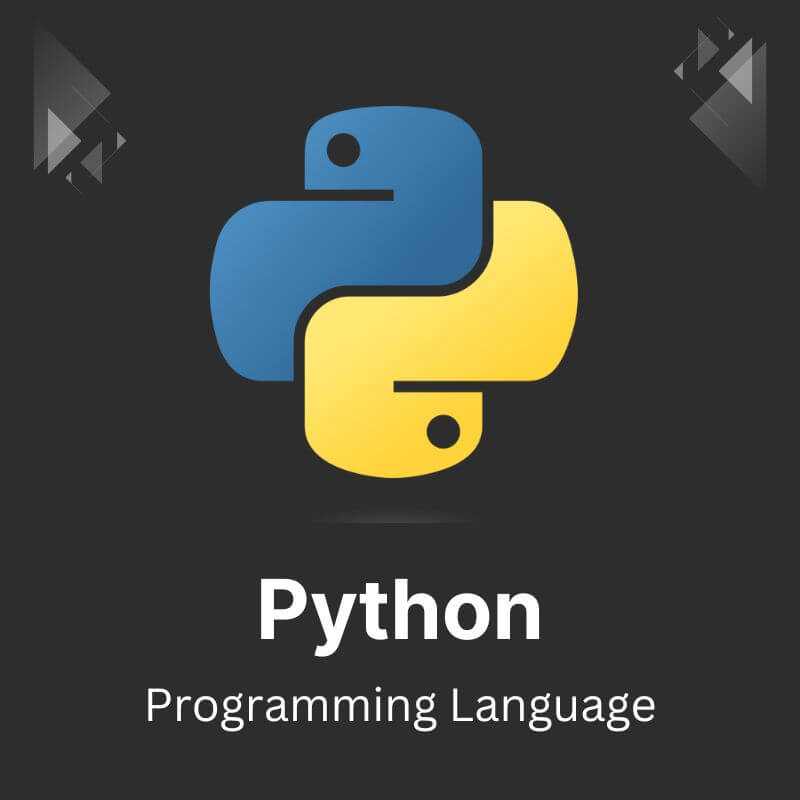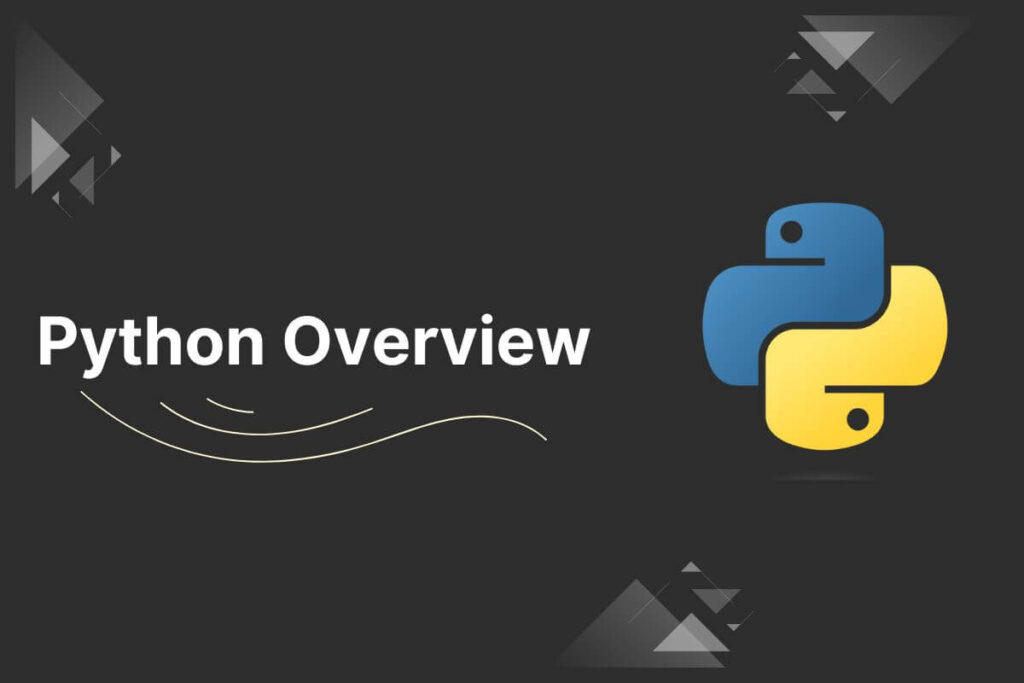Exploring the realm of programming might seem overwhelming, but using the right language can make it fun and fulfilling. Meet Python, a versatile and easy-to-learn language that has become extremely popular in the tech industry. Its straightforward rules, extensive libraries, and helpful community make it a great option for anyone who wants to start learning programming.
Forget complicated jargon! This guide is here to turn you from a Python newbie into a pro, step-by-step. Think of it as a roadmap that takes you from the basics of Python, like variables and loops, all the way to advanced concepts. By the end, you’ll have a solid understanding of Python and be ready to tackle bigger coding challenges. Who knows, maybe you’ll even become a world-class software engineer someday! But for now, let’s just focus on having fun and learning Python together.
Take a look at all the topics that are discussed in this article:
What is Python?
Python is a high-level, interpreted programming language known for its simplicity and readability. It was created by Guido van Rossum and first released in 1991. Python supports multiple programming paradigms, including procedural, object-oriented, and functional programming.
Why to Learn Python?
Learning Python offers numerous benefits, which contribute to its popularity as a programming language. Here are some compelling reasons to learn Python:
- Wide range of uses: Python is like a Swiss Army knife for computer programming. It can do a bunch of cool stuff like building websites, analyzing data, teaching machines to learn, making tasks automatic, writing quick scripts, doing complex math, creating video games, and a whole lot more. It’s like the superhero of programming languages!
- High demand: Python is always on the list of languages that companies want, which means if you know Python, there are lots of job chances waiting for you.
- Easy to learn: People say Python is one of the easiest languages to learn because its way of writing code is simple and easy to understand. So, if you’re new to programming and want to start quickly, Python is a great pick.
- Abundant resources: You can find lots of helpful stuff online like tutorials and courses, and there are friendly communities that focus on learning Python. So, if you’re trying to learn, you won’t be alone – there’s plenty of support and guidance out there.
- Large and supportive community: Python has a big and active group of people who love coding and are ready to help and share what they know. This is super helpful when you’re learning and trying to figure out problems.
- Extensive libraries and frameworks: Python has a bunch of ready-to-use tools and building blocks called libraries and frameworks. They’re like shortcuts, already written by others, so you don’t have to start from scratch and save a lot of time and effort.
- Automation potential: Python is good at making things automatic, which means you can save time and energy, whether it’s for stuff at home or work.
Here are some additional questions to help you decide:
- What are you interested in?
- Are you looking for a new career path?
- Do you want to automate tasks or build something new?
- Are you comfortable with learning new things?
If you answer yes to any of these questions, then learning Python could be a great investment in your future.
Python Online Compiler
Absolutely! Here’s a basic Python example you can try in any online compiler:
# This is my first Python program.
# Print a simple message
print("Hello, world!")
# Calculate the sum of two numbers
num1 = 10
num2 = 20
sum = num1 + num2
print(f"The sum of {num1} and {num2} is {sum}")
# Get user input and greet them
name = input("What is your name? ")
print(f"Hello, {name}! Nice to meet you.")
This code snippet demonstrates several fundamental Python concepts:
- Printing: Using the print function to display text on the console.
- Variables: Assigning values to named variables (num1, num2, name).
- Arithmetic: Performing calculations (+ symbol).
- String formatting: Concatenating text and variables using f-strings for cleaner output.
- User input: Taking input from the user using the input function.
Feel free to modify this code, experiment with different values, and try it out in any online Python compiler! Remember to save your code (if the compiler allows) or copy and paste it again if you run into issues.
Careers with Python
Python is a versatile and widely used programming language that is applicable in various domains. Here are some career options where Python is a key skill:
Software Development:
- Python Developer: The ability to build robust and efficient web applications, APIs, and backend systems using powerful frameworks like Django and Flask.
- Full-Stack Developer: The capacity to seamlessly combine front-end skills with the power of Python, offering a complete solution for web development.
- Mobile Developer: The innovation of using frameworks like Kivy to create mobile applications with Python, breaking down traditional barriers between mobile and desktop development.
- Desktop App Developer: Embrace the versatility of frameworks like PyQt or Tkinter, allowing developers to create rich, user-friendly desktop applications with ease.
Data Science & Analytics:
- Data Scientist: Leverage Python for data analysis, manipulation, modeling, and machine learning.
- Data Analyst: Conduct data cleaning, exploration, and visualization to uncover insights and facilitate informed decision-making.
- Data Engineer: Create and manage data pipelines and infrastructure utilizing Python libraries.
- Business Analyst: Use Python for data-driven analysis to solve business problems.
Other Fields:
- Machine Learning Engineer: Build and deploy machine learning models using Python libraries like TensorFlow and Scikit-learn.
- DevOps Engineer: Implement automation for infrastructure and software deployment through Python tools such as Ansible.
- Cybersecurity Analyst: Leverage Python for security automation, web scraping, and data analysis.
- Automation Engineer: Utilize Python libraries like Selenium to automate redundant tasks and processes.
- Quantitative Analyst: Apply Python for financial modeling, risk analysis, and trading strategies.
- Scientific Researcher: Perform data analysis, simulations, and visualizations in various scientific fields.
Python Jobs
Python is a widely used programming language in the tech industry, and many big companies leverage it for various purposes, including web development, data analysis, artificial intelligence, machine learning, and more.
While it’s challenging to provide an exhaustive list, Here’s a list of some of the big companies that use Python:
- Netflix
- Spotify
- Amazon
- Dropbox
- Uber
- NASA
- JPMorgan Chase
- Stripe
- PayPal
- Pfizer
- Boeing
Advantages of Python
Some key advantages of Python include:
- Easy to learn and read due to the use of indentation over brackets and simple, English-like code syntax
- Substantial number of libraries and frameworks for everything from machine learning to web development
- Cross-platform compatibility allows apps to run on various operating systems
- Interpreted nature so no compilation step is needed, allowing for rapid prototyping and development
- Dynamically typed language supporting both imperative and OOP styles
- Open-source nature with strong community contribution
Frequently Asked Questions about Python
- Visit the official website: https://www.python.org/downloads/
- Download the installer suitable for your operating system (Windows, macOS, Linux).
- Follow the on-screen instructions for installation.
A Python interpreter is a program that executes Python code. It interprets and translates high-level Python scripts into machine-readable bytecode, enabling the execution of Python programs without the need for prior compilation.
- Uses indentation (spaces) to define code blocks, making it visually clean.
- Variables with lowercase names (e.g., name).
- Basic operators (+, -, *, /) for math and comparisons (=, !=, <, >).
- print() function to display text.
Some popular IDEs and code editors used for Python include PyCharm, Visual Studio Code, Jupyter Notebook, Spyder, Sublime Text, Atom, IDLE (Python’s standard IDE)


